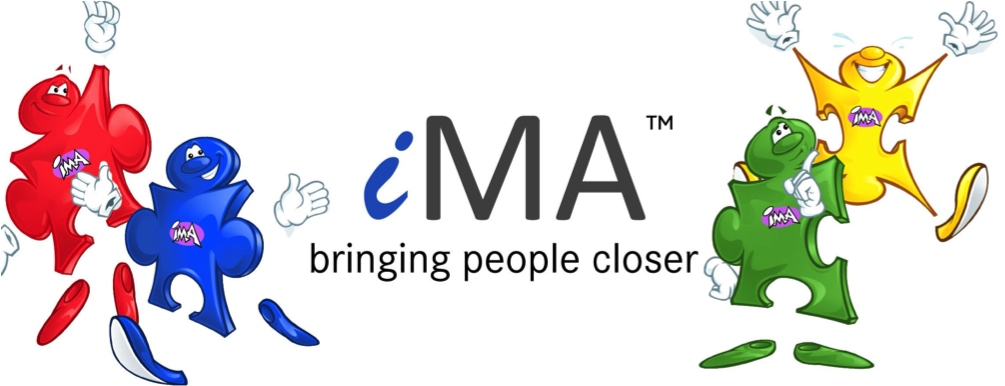Connectivity is a fundamental life skill and yet, up until now, little or no training has been available to us. iMA (which stands for Identify, Modify, Adapt) changes all that.
iMA is an exciting, universal language that’s designed to maximise connectivity — specifically mutual-liking, trust, understanding, and respect. It works by assigning each person a colour, each with its own set of characteristics and behavioural styles.
But what exactly is the relationship between colours and behavioural styles? Join us as we explain everything you need to know.
An Introduction to iMA
Everyone in the world speaks one of the four iMA dialects, putting them on the same wavelength as 25% of the world’s population. The majority of people, many of whom are important to your success, are on a completely different wavelength than you.
The universal language of iMA is a simple way of observing and understanding the differences in people, then connecting with them in a way they feel comfortable. When this happens, communication, trust, understanding, cooperation, and sales go up — while stress and tension go down.
iMA Colour Personality Types Explained
The concept of iMA divides individuals into four main colours; High Red, High Green, High Yellow, and High Blue. The term “high” is used because iMA recognises that people are a mixture of all four behavioural styles, but will have dominant traits.
Let’s have a look at the different personality colour types in more detail:
iMA High Red
High Reds are goal-oriented go-getters who are most comfortable when they’re in charge of people and situations. They focus on a no-nonsense approach to bottom-line results. Fast-paced and task-orientated, they work quickly and impressively by themselves.
Individuals classified as an iMA High Red are extremely assertive, efficient, and time-centric. They’re comfortable with making difficult decisions and having difficult conversations, and are very happy to express their opinions.
iMA High Reds have a natural forward momentum, preferring to focus on what’s coming next rather than the here-and-now or the past. They’re logical and linear in their approach, and are led by thoughts and tasks. Therefore, you’ll often find them in job roles that require these traits.
From a communication point of view, High Reds are direct, clear, and straight-to-the-point — which is exactly how they would prefer other people to communicate with them.
iMA High Yellow
High Yellows, on the other hand, are outgoing, friendly, and enthusiastic idea-people who excel in getting others excited about their vision. They’re fast-paced, high-energy, and deal with people in a positive, upbeat way. Eternal optimists, they are adept at influencing people and building alliances to accomplish their goals.
iMA High Yellow personalities prioritise relationships over facts and detail, and are extremely comfortable with being the centre of attention. It’s unusual for them to go unnoticed in a gathering of people. Fast-talkers, they’re able to make lightning-quick decisions, and are known to be spontaneous and impulsive. They’re visionaries, forward-thinkers who like to work and collaborate with others — feeding off recognition, congratulations, and applause. Their focus is always on the bigger picture.
If you want to communicate effectively with a High Yellow, they’re big on eye contact and prefer an open, fun, and informal approach. Think executive summary and try not to bog them down too much with detail.
iMA High Green
People with a colour personality profile of High Green are serious, analytical, persistent, systematic individuals who enjoy problem solving and working towards tangible results. While High Yellows are more spontaneous, High Greens prefer to do research beforehand — determining risk and calculating margins of error before finally taking action.
iMA High Greens are receptive and non-assertive, preferring to work at a slow and considered pace that takes in all the available data and concentrates on the detail. They pride themselves on being extremely accurate, precise, and correct.
Highly-logical, High Greens are led by thoughts. They’re well-organised, efficient perfectionists who have high standards in their work, and appreciate others who do the same. Adept at problem-solving, they prefer to back themselves up with well-researched information.
They will prioritise facts over relationships, and are unlikely to express their opinions readily until they believe they’re in a safe environment to do so. High Greens are self-contained, task-orientated, and thrive on working independently — often completely on their own.
Effective communication with a High Green behavioural style involves using exact, accurate, detailed information that is extremely well-considered. This is what you can expect from them in return.
iMA High Blue
The last of the iMA colours and behavioural styles, High Blues are warm, supportive, and nurturing individuals who develop strong networks of people. They’re always willing to be mutually-supportive and reliable, making them excellent team players.
Non-assertive and receptive, High Blues are loyal, trustworthy, and friendly, who make great listeners and personal problem solvers. They prioritise relationships and have a natural ability to build meaningful and often long-term connections with others. Naturally generous with their time, they prefer to keep people on-side and are far more likely to ask questions rather than make statements. They will only express their opinions when absolutely necessary and in what they consider to be a safe environment.
Preferring to stick in small groups of people, High Blues are very receptive to a personal interaction but are not going to be the one who initiates the conversation. They are led by feelings, and have an open, sincere, caring, and kind communication style.
Why Understanding Colours and Behavioural Styles is Important
The real beauty of being able to identify and understand behavioural styles and colours is that it enables you to work with everyone very effectively. This enhanced level of tolerance, coupled with more efficient communication methods, removes all the common and predictable communication breakdowns that occur far too often.
Getting to grips with iMA colours and behavioural styles can enhance people’s personal and professional lives, and can even be a benefit to businesses too — especially when it comes to staff retention and training.
By identifying the iMA personality colour types of others and then modifying your own behaviours accordingly, you can enjoy effective communication with everyone you come across.
Effective Support with Colour Personality Types
From education and mediation, to hospitality and recruitment, there are many applications for iMA colours and behavioural styles in the corporate world. The same is also true for people’s personal lives.
Many difficult relationships are caused by a breakdown in communication that can be rectified by understanding the other side’s personality type and traits, and adapting yours accordingly. Gaining an understanding of iMA can show you how.
The process starts by taking our free questionnaire to find out your own colour and personality style. From there, you can learn how to identify other people’s traits and how to communicate with them effectively.
To find out more about what iMA can do for you, get in touch with me today.




